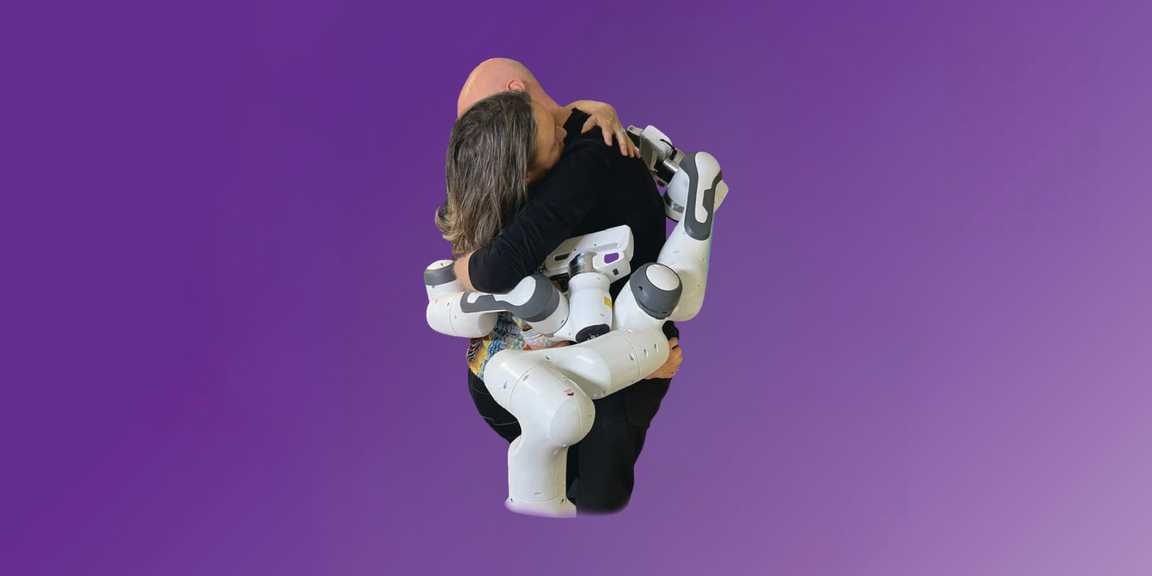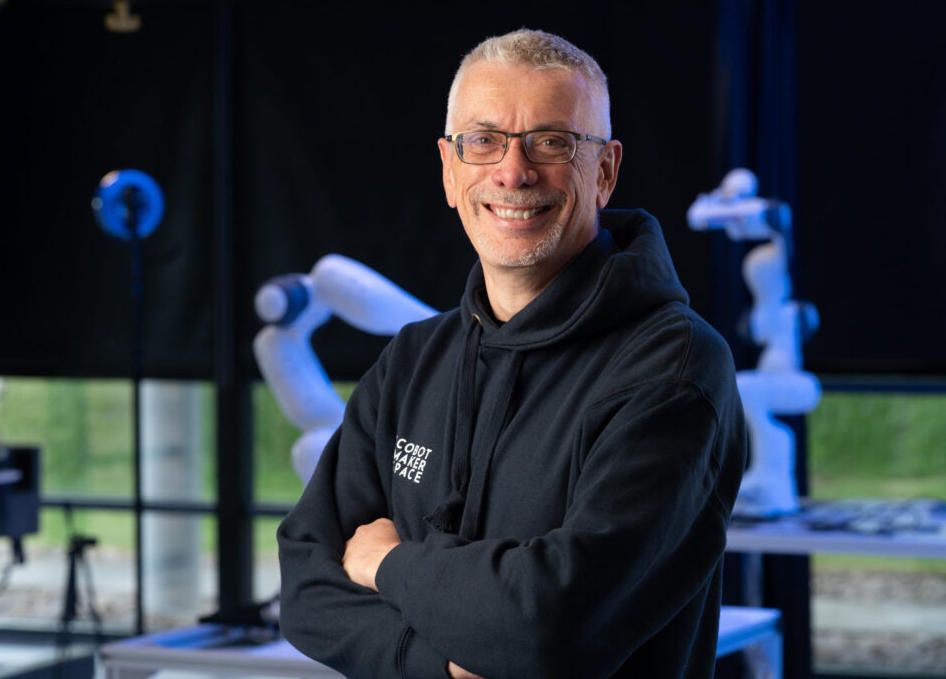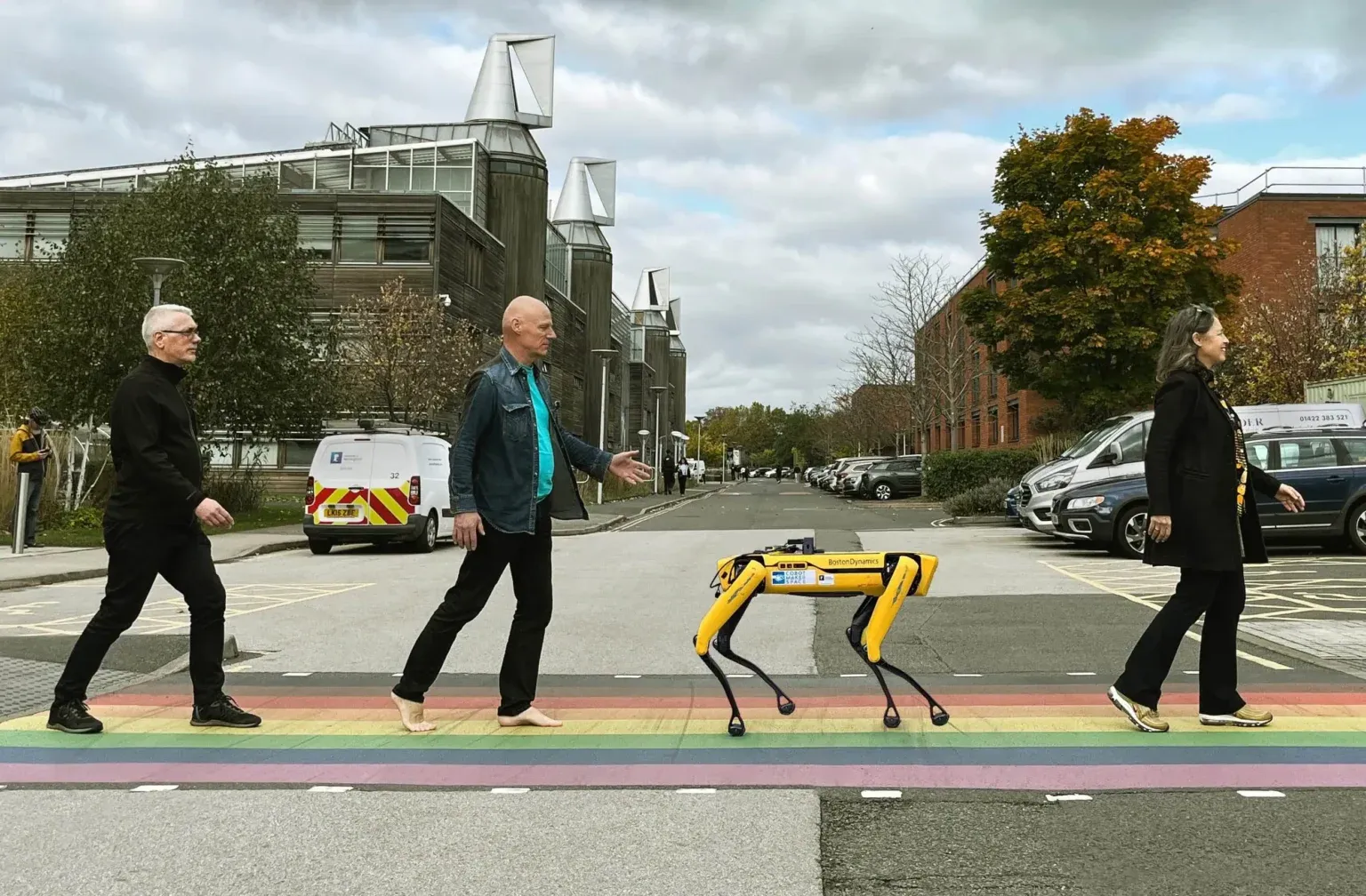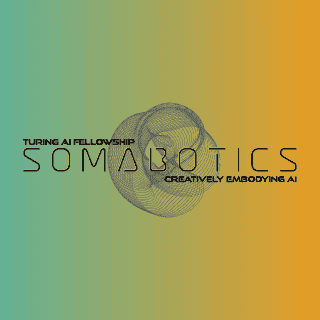
Somabotics: Exploring AI’s Role in Media Art Preservation and Documentation
An insightful panel during this year’s Transformation Digital Art delves into the transformative intersection of AI, robotics, and media art preservation
As artificial intelligence (AI) increasingly interacts with the arts, how can we use it to produce, present, preserve and document media art? Somabotics, a new multi-institution research programme led by Steve Benford (University of Nottingham), aims to rethink AI’s role in this space, blending human creativity with cutting-edge robotics and AI to reshape our understanding of art, interaction, and preservation.
AI’s potential in the realm of art and performance documentation has yet to be fully realised. At the Transformation Digital Art 2025 symposium, experts from various fields will engage in a thought-provoking 90-minute panel discussion titled Art, AI, and Robotics: Documentation Challenges and Possibilities of AI for Media Art and Performance. This session will bring together Steve Benford (University of Nottingham), Richard Ramchun (University of Nothingham), Gabriella Giannachi (University of Exeter), and artist duo Lancel/Maat, who will examine the role of AI in documenting and preserving media art, with a particular focus on the early stages of the project Somabotics: Creatively Embodying AI.
During the symposium, the panel will discuss how Somabotics is pioneering new ways of using AI for art-making, preservation, and documentation. How can AI and robotics generate new forms of artistic interaction? And how can AI capture the evolving, participatory, and immersive nature of media art?
By integrating AI and robotics into creative practice, artists are reshaping how art is archived, experienced, and understood—opening up new possibilities for digital preservation. The discussion will also examine AI as a tool for preserving media art, which often relies on formats and technologies prone to obsolescence. Using Lancel/Maat’s Embrace Angels as a case study, the discussion will delve into the challenges of capturing a complex, interactive hybrid work that intertwines robotics, human bodies, somaesthetics, VR, and AI.
Funded by the UKRI Turing AI Fellowship, Somabotics aims to explore the potential for AI and robotics to reshape the way we create, document, and preserve artworks that are inherently dynamic, interactive, and ever-evolving.

AI, Robotics, and Human Meaning-Making
AI is often framed through a techno-centric lens, understood as a technology that realises technical paradigms like neural networks through data pipelines and algorithmic training. But as humans, we are driven by the need to make meaning of the world and ourselves. What if we reimagine AI not just as a tool but as an experience co-constructed by people?
This shift would call for human-centred and co-design methodologies from Human-Computer Interaction (HCI) to intersect with artistic approaches—encompassing creative exploration, rigorous production, archival documentation, and critical reflection.
At the core of Somabotics is a commitment to humanising AI. Through a series of artistic experiments, ranging from robots that dance and perform with humans to those that embrace and groom participants, this project explores how art and AI can evolve together. Artists like Lancel/Maat and Blast Theory continuously push the boundaries of AI’s role in artistic creation, documentation, and preservation, challenging assumptions about what AI can do.
How can AI can extend beyond technical processes to deepen our understanding of ourselves, the world, and AI’s place within it? Somabotics moves beyond technical paradigms to focus on embodied interaction: humans and robots working together in ways that elicit meaning-making and creative expression. By embracing ambiguity, improvisation, and human-centred co-design, the project redefines AI as an active participant in the artistic process.
Innovating Documentation and Reimagining Preservation of Media Art
What role can AI play in documenting and preserving digital art? Somabotics explores how AI tools can archive, reactivate, and conserve artworks that evolve over time, adapting to new contexts and interpretations. As these works shape new cultural experiences, the project rethinks how AI can capture, store, and present digital art in inclusive and dynamic ways—proposing a new model for media art preservation.
Beyond documentation, Somabotics investigates how AI can be used to curate exhibitions, drawing from historical records and artistic reactivations. The project will generate new knowledge on responsible AI innovation, analysing how AI can support creativity while ensuring archives remain resilient and accessible. A practical intervention will be developed in archival and conservation studies—led by humanities research—to address the complexities of preserving hybrid and AI-generated artworks.
By pushing the boundaries of embodiment, Somabotics challenges us to reconsider AI’s artistic potential: How can artists shape AI? How can AI embrace unpredictability? And how can it help preserve the ever-changing nature of digital art?
Rethinking Intimacy in a Hybrid World

Would you trust a robot to embrace you? Can a robot give consent? Pioneering duo Lancel/Maat (Karen Lancel and Hermen Maat) ponder these questions in their research project Embrace Angels, which challenges the dynamics of human-robot touch. The audience are invited to explore new forms of shared physical experience with centaur-like robots that transmit sensations between participants and spectators. The work questions bodily entanglement, consent, and the evolving role of machines in mediating physical connection. Developed during a residency at Nottingham’s Cobot Maker Space in 2023, Embrace Angels builds on research into autonomous hugging robots by project partner Alexis Block.
As part of the Somabotics research programme, Blast Theory will create a new work exploring intimate, gentle touch between robots and humans. Collaborating with the Somabotics research team, the artists will examine how we negotiate consent and trust in human-machine interactions.
With its focus on the embodied, interpretive nature of AI, Somabotics offers a glimpse into the future of the creation, preservation, reactivation, and archiving of artworks. During Transformation Digital Art 2025, the panel will explore these ideas further, engaging participants in discussions about the transformative potential of AI in media art. Read more about the symposium programme and discover the speakers.
Header image: Lancel/Maat, Embrace Angels | Images in the text: 1) Steve Benford; 2) Lancel/Maat, Embrace Angels







